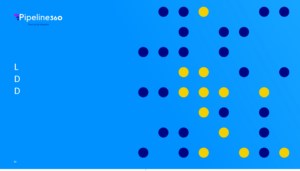Third-party demand generation is an effective strategy when done right. It requires much planning, organisation and management.
So, we created a quick list of Do’s and Don’ts to always keep top-of-mind when running your third-party demand gen programs.
The third-party demand gen DO’s
- Focus on initial engagement: 3rd-party demand gen is all about expanding your reach so you can engage with target audiences that otherwise wouldn’t easily find you. Keep in mind that you’re looking for introductions not handshakes – those come later.
- Use high-value, top-funnel content: This typically means content that is educational and/or prescriptive in nature, rather than product-focused.
- Leverage a diverse range of accountable sources: The more you can diversify your sources, the more you can optimise campaigns based on performance and scale results. Of course, your ability to expand sources depends on efficiency, which often necessitates technology investments.
- Implement high-touch outreach/nurture: Again, the initial lead/inquiry is just the start; you’ll need to put much thought and efforts into nurturing these leads into opportunities.
- Test and measure: Don’t expect every campaign or source to work out. Just like with any mar-keting tactic (e.g., channel, content asset, etc.), there are those that work, and those that don’t. Very often, certain sources work better when using certain content types via specific channels to engage a particular audience. Be sure to ask your partners and sources what they find works the best for your types of campaigns, but also be a bit sceptical. Regularly testing and measuring programs is the best way to ensure big returns on your 3rd-party investments.
- Use data to optimise: Do use data to determine the right content to serve and the right places to serve it. Find the sites where your best prospects are researching, then adapt your content to the types that perform best on each site, rather than a one-size-fits-all approach.
The third-party demand gen DON’Ts
- Don’t buy lists/names: While this may seem like a good idea because of a lower price point, it’s not. These names have not engaged with your branded content, so you often end up spending much time and many resources trying to convert individuals who never expressed any interest in your brand, product or service.
- Don’t use product info/assets: Remember, 3rd-party demand gen is a top-funnel initiative, which means potential customers are merely trying to understand their challenges. Use content that helps them understand such issues and provides some guidance. The product-focused content will be more beneficial later in the buying cycle.
- Don’t leverage just a few providers: Putting all your eggs in one basket will severely limit program impact. This is all about testing, learning and optimising, and you can’t do that if you only invest in a couple sources.
- Don’t route leads to outside sales: Leads generated via 3rd-party demand aren’t sales-ready. If you immediately route them to sales without nurturing and scoring leads, you’re just going to waste budget and sales team time.
- Don’t just set it and forget it: The best 3rd-party demand program results come from vigilant, frequent tracking, measurement and optimisation.


